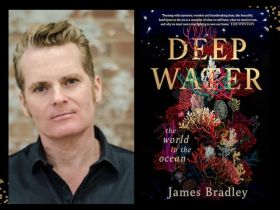Book cover image: Securing Australia’s Future by Simon Torok and Paul Holper.
In the prologue to this excellent publication Professor Chub, who was Australia’s Chief Scientist from 2011 to 2015, says, ‘It is much easier to make things up than to look things up.’ Fortunately Securing Australia’s Future makes it much easier to look up a treasure-chest full of good ideas.
Under Chub’s leadership, the Australian Council of Learned Academics (ACOLA) commissioned 11 reports designed to help map the path to prosperity for Australia in the decades ahead. The 11 appendices in this book summarise the findings and recommendations of these reports – reports which are evidence-based and the work of interdisciplinary collaboration by some of Australia’s best minds. The full reports are publicly available but unlikely to be widely read by Australia’s decision-makers or by those that influence public policy.
Hence the value of this book: in it, Simon Torok and Paul Holper have distilled the many recommendations of the reports into eminently readable and persuasive form, and done so in fewer than 200 pages. Thus the work of ACOLA has the opportunity to become much more widely accessible.
However, Securing Australia’s Future is not a mere collection of appendices – the authors have in six chapters emphasised and elaborated on key issues which they have described as ‘golden threads’. For example:
‘A prosperous future is more than just technological advancement. Securing an Australian future characterised by social wellbeing and increased equity, prosperity and sustainability needs us to understand international trends and position Australia to take maximum advantage of its strengths. Achievement will entail economic, social and cultural changes, facilitated by visionary leadership and by targeted investment in skills, infrastructure and innovation.’
In the chapter on boosting productivity with innovation and new technologies, the golden thread emphasises the value of a workforce that ‘effectively combines humanities, arts and social sciences and science, technology, engineering and mathematics capabilities for creative problem solving’.
In a book brimming with exciting suggestions on how to improve Australia’s future, it may be presumptuous to selectively quote a few of them. However to delineate them all is impossible within the confines of a review such as this and to quote none leaves the potential reader of the book insufficiently informed.
Some of the suggestions, in no particular order, refer to the importance of: supportive bipartisan government policies; investment in public transport; environmentally friendly products; understanding resistance to change; effective leadership; climate change impacts on planning; dealing with an ageing population; collaboration between government; academia and business; organics and animal welfare, and lastly research translation.
Above all, Torok and Holper remind the reader of the power and importance of education. In the chapter that explores fostering and enhancing innovation, science and research through improvements to education in areas ranging from engineering and mathematics to the humanities and social sciences, they recount some research by the Academy of Science. A representative sample of Australians was asked how long it takes for the earth to go around the sun. Almost a third said it takes a day. Obviously, there is some scope for improving educational outcomes.
This book should be read, or at the very least used as a reference, by politicians of all persuasions. It should be read by people who write for the media or speak on radio or television. It should be read by all decision-makers, and that includes those whose political decision-making is confined to their vote at the ballot box. Does the work this book describes cover everything? It does not pretend to do so. But should only a fraction of its recommendations be heeded, Australia would have a better future.
Rating: 4 1/2 stars out of 5
Securing Australia’s Future By Simon Torok And Paul Holper
Paperback | May 2017
ISBN: 9781486306695 | 208 pages | 245 x 170 mm
Publisher: CSIRO Publishing
Colour photographs, Illustrations
ePDF | May 2017
ISBN: 9781486306701
Publisher: CSIRO Publishing
Available from eRetailers
ePUB | May 2017
ISBN: 9781486306718
Publisher: CSIRO Publishing
Available from eRetailers





